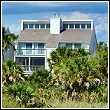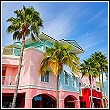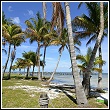Wildlife Control In South Florida
Florida's warm, temperate climate and lush, water rich topography provides wildlife with everything they need to survive and thrive. The list of wildlife in Florida is not only diverse, but plentiful too. Some species are unique to the area, some are native and others are non-native, invasive species.
Floridians and area wildlife have been a part of each other's world for many years, residents understand that the wildlife they've grown to know isn't going anywhere - and neither are they. In Florida, co-existence is not a preferred option, it is the only option, and we know how to make it work.
& Surrounding Areas
Co-Existing With Wildlife
In many areas of the state, the human population is exploding at a furious pace, a rapidly expanding population means a rapidly decreasing habitat for wildlife. As wildlife's natural habitat begins to erode in size, animals are left with little choice but to adapt to the new environment that humans have created for them. That means turning to homes, residential waterways, boats, sheds and other man made entities to meet their needs for food, water and shelter - and this can lead to problems.

Swimming In An Infinity Pool
Nuisance Wildlife In South and Southwest Florida
When an animal invades homes, destroys property, creates an annoyance, or becomes a danger, that animal falls into the category of "nuisance wildlife". There are more kinds of nuisance wildlife in Florida than just about any other state, and this creates a unique set of challenges for wildlife control professionals in the area.
Nuisance wildlife includes both native and non-native species, as both can become a nuisance, health hazard or danger for residents, and their property or pets - some samples of the nuisance wildlife that can be found in South and Southwest Florida includes (but is not limited to) ...
- Iguanas
- Nile Monitors
- Bald Eagles
- Osprey
- Canada Geese
- Flying Squirrels
- River Otters
- White Tail Deer
- Coyotes
The nuisance caused by each of these animals can vary. For instance, you may not have thought of birds of prey as being a nuisance, but they can become problematic when they are protecting their nest, diving at humans who get too close (as far as within 150 feet). White tailed deer are not thought of as aggressive or dangerous, but they can invade and destroy gardens and crops. Iguanas dig burrows that degrade sea wall safety. Florida black bears can be a risk to humans and their pets, and destructive around property when searching for food. Alligators can become dangerous when searching for food sources. And, panthers in the area may prey upon pets and livestock.

Some non-native, exotic animal populations have become a fast rising problem for Florida residents in recent years - following their release or escape into the wild after being imported from other areas. For example, the Burmese python preys on native wildlife, pets and other domestic animals. Even parakeets such as the monk parakeet have been causing damage to power lines as their populations have increased in certain areas. Iguanas, which are becoming more and more plentiful, damage plants and landscaping - and they bite too!
Non-native species are also disrupting the natural balance in Florida. Nile monitor lizards have become a problem in Cape Coral where they prey upon the protected Florida burrowing owl, and the black spiny iguana preys upon sea turtle eggs and shore bird nestlings.

A Construction Project To A Halt
Even the beloved burrowing owl can become a "nuisance" if it builds its burrow in the wrong location at the wrong time. The burrowing owl is a protected species and if a burrow is discovered on a construction site, the construction process must be suspended and the burrow left undisturbed until nesting season is over.
Wildlife Removal
It is important to know that many wildlife species in Florida are protected or regulated and special care must be taken with respect to how you approach controlling them in the wild, around your home, yard or property. Trapping, relocating or simply disturbing certain animals can get you in trouble, and certain restrictions may also limit which professionals you can or cannot turn to for help.

A Regulated Species
Requirements vary greatly by animal, and you may be surprised as to which animals are regulated and which are not. Always review state requirements before attempting removal, killing or even harassment of nuisance wildlife. Please call a wildlife professional or visit the Florida Fish and Wildlife Conservation Commission website for more information on the state's nuisance wildlife permit requirements.
There is another reason to call a wildlife professional when you spot wildlife around your property - wild animals can be dangerous.

There are all kinds of ways you can be unintentionally careless when it comes to wildlife, but in Florida those mistakes can be costly, and can lead to serious harm or even death.
The South and Southwest Florida Habitat
Southwestern Florida's many waterways and lush vegetation creates a particularly favorable habitat for many kinds of wildlife making it one of the most prolific areas in the state for wildlife control issues.
The very things that makes waterfront communities like the one seen below so ideal for people, including the beautiful water, plentiful palm trees and beautiful gardens, also makes them ideal for wildlife too.

An Ideal Habitat For Wildlife
Birds are prolific in Southwest Florida. They love the abundant supply of water, vegetation, and the many food sources that come with it. Florida birds can be a beautiful site to behold but under the right circumstances they can quickly become a nuisance.
Herons for instance, enjoy stealing bait from fishermen's buckets and wandering around tables at restaurants looking for food, and Osprey can build their nests in some very inconvenient places. The Osprey in the photo below built their nest on a Florida intra coastal waterway marker.

Raccoons, bats and squirrels thrive throughout the region and are some of our most common calls. Raccoons, bats, iguanas, squirrels and birds love to nest in attics, and snakes can be found just about everywhere. There is certainly no shortage of nuisance wildlife in Florida.
We love solving wildlife issues with humane methods that don't have a negative impact on either the property owner or the animal.
The plentiful nuisance wildlife, rise in exotic pet escapes, growing population and booming construction across the state has made the need for our services greater than ever - and we are happy to help.
1242 SW Pine Island Rd., Suite 310
Cape Coral, Florida 33991-2126
help@totalwildlifecontrol.com
Coral Gables and Southeast Florida
help@totalwildlifecontrol.com
















